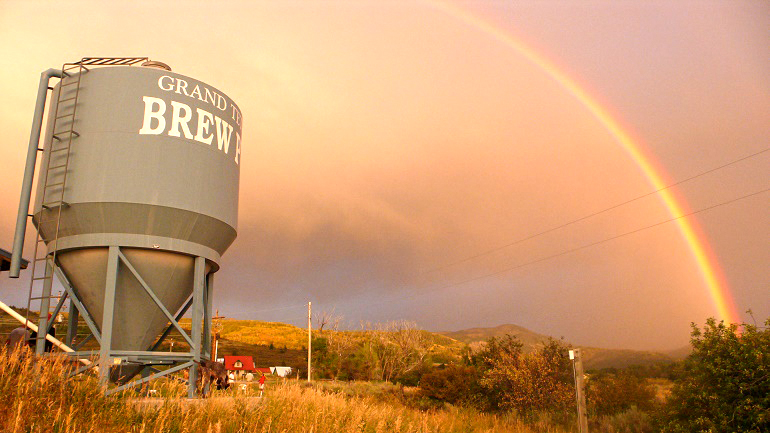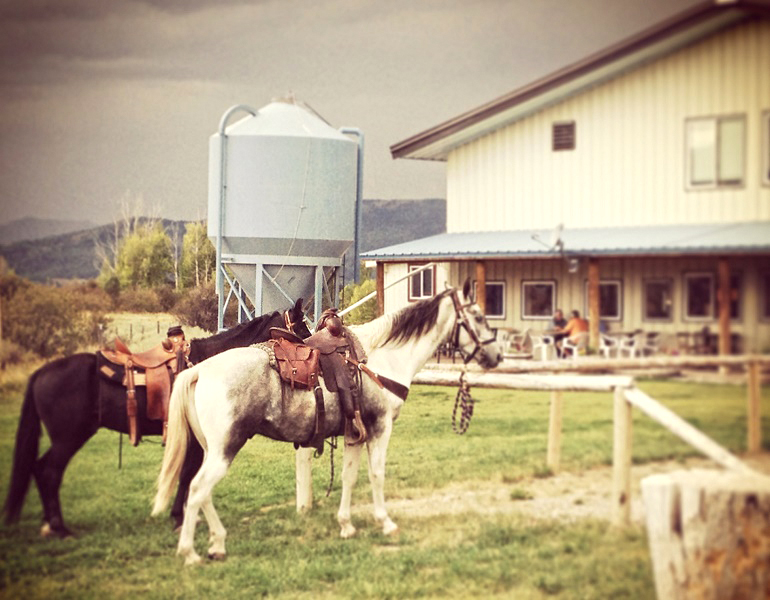What drew you to craft beer and brewing?
In another life I worked in politics as a campaign manager. That was stressful work; I’d lie awake every night thinking about the thousand things I didn’t get done that day. One fateful day in 1986, my girlfriend at the time gave me a homebrewing kit. I stopped by the local homebrew shop and bought Byron Burch’s book [Brewing Quality Beers] and the ingredients for an extract stout. Luckily, I also got the shop owner’s home phone number. When I finally had the time to brew, it was magical. For eight hours I thought only about brewing, not the campaign. It was a Sunday, and I called the shop owner eight or ten times and asked lots of questions: ‘Is it supposed to look like this? What happens next? How do I know I’m doing it right?’ Those were the days before caller ID or cell phones, but I give him a ton of credit. He picked up every time I called, and answered every panicky question with patience and humor.
My last job in politics was as a Capitol Hill staffer to Congressman Jamie Clarke from Western North Carolina. I did his Interior Committee work, and successfully passed a bill to protect a beautiful stretch of water near Asheville. I helped get another bill through the House to protect a pristine forest from logging, but it was blocked at the eleventh hour by an anonymous “hold” in the Senate.
That experience drove home for me the disconnect found in so many professions between hard work and success. I saw terribly-managed campaigns win and wonderfully-run campaigns get swept up in national trends and lose. I saw on Capitol Hill how one anonymous Senator can destroy years of work by dozens of people. I was burnt out on politics and spent a few months working as an assistant to a carpenter, mostly building decks in the suburbs of DC. There I learned the importance of “measure twice, cut once,” and the satisfaction of seeing the result of hard work at the end of a long day.
While I was learning carpentry my sister Kim, who worked for Greenpeace, had a conversation with John Mallet (now at Bell’s) at a party, and Kim told him I was a homebrewer. John was looking for an assistant at Old Dominion Brewing Company, so Kim put us together. John hired me to scrub floors and drive the delivery truck, and my professional career was born. My years at Old Dominion were amazing, as I learned how to brew from John and also from Ron Barchet (founder of Victory Brewing), two of the best brewers I know.
It’s the connection between good, hard work and its results that has kept me brewing. I take satisfaction every day in being able to enjoy the product of our labor at the end of each shift.

"I take satisfaction every day in being able to enjoy the product of our labor at the end of each shift." - Rob Mullin
Photo Credit: Grand Teton Brewing
How did you end up at Grand Teton Brewing Co.?
After Old Dominion, I worked at Trap Rock Restaurant and Brewery in Berkeley Heights, NJ – a beautiful restaurant – like an English country inn complete with garden, then with a chef the New York Times had called the best in the state. That’s where I learned to love beer and food. We went from three or four permanent house beers to nine at a time on tap, all constantly changing to complement the chef’s seasonal menus. I worked with the wait staff to educate our guests about beer and food pairing, and we had wildly successful monthly beer dinners. I loved it!
Then 9/11 happened. I watched it unfold on the TV at Trap Rock, then went home and saw the smoke from our house. My bride, Constance, and I had been trying to buy a house in suburban New Jersey, but that became impossible on a brewer’s salary as nervous New Yorkers fled the city. It seemed like a good time to leave the metropolis behind.
I had been in touch with Charlie Otto, brewer of one of the first “microbrews” I’d ever enjoyed, Moose Juice Stout. I’d spent the summer of 1990, between political jobs, in Grand Teton National Park and fell in love with the mountains. I brought a group of DC friends here to ski in early ’91, and we bought beer from Charlie’s growler station (the first of its kind) at The Liquor Store in Jackson. In 2002 Charlie was looking for a new head brewer, and Constance and I were ready to head west. We drove cross-country with our three young children and built a house on five acres at the base of the Tetons.
What are some of your favorite beers you've brewed while at Grand Teton?
The sentimental favorite has to be Bitch Creek ESB. Charlie knew I had brewed a well-received English-style ESB in Manhattan, and Red Hook ESB was popular then, so Charlie asked me to brew something like those. Honestly, I had no interest in brewing a British-style beer. I had just moved to the Pacific Northwest, and I only wanted to brew big, American beers with Pacific Northwest hops.
Mullin's first brewery job was as a delivery truck driver for Old Dominion Brewing Co. in Delaware.
Photo Credit: Freya M. Boughton
Charlie had been treating the water to mimic English brew water and using British hops to make good, British-style ales. The first thing I did when I got here was end our water treatment. Then I replaced the hops. The resulting dark beer was very Pacific Northwest: a big, earthy, American-style Brown Ale with huge piney/citrusy hop flavors and aromas. It won a couple of medals and was our best seller for a long time. All these years later it’s still our number-three seller, and probably our best-known beer.
Another really fun beer was Bacon-infused Sheep Eater Scotch Ale. One of our brewers had been a pastry chef before changing careers, and he taught us how to infuse bacon flavor into the beer without killing its head. We use some peat-smoked malt in the Sheep Eater, and that worked wonders with the bacon.
Finally, I should mention Barrel-Aged Huckleberry Sour. It was our first (intentionally) sour beer, and kind of a problem child. I’d convinced the new owners to spend a few thousand dollars on fresh huckleberries to add to chardonnay barrels of Imperial Witbier dosed with lactobacillus and Brettanomyces. After a year in the barrels, none of us were happy with the beer. A second year brought minor improvement, but the owners were really starting to look at me sideways. Finally, after three years, the beer just turned. It was great, everyone loved it, and that started us down the road with sours, one of our current strengths. We’ve grown from 20 wood barrels two years ago to 130 now, all thanks to that darn huckleberry beer!
What's the beer scene like in Idaho?
I’m lucky enough to serve on the board of Idaho Brewers United, our state guild, so I can tell you with some authority that our beer scene is tremendous. Last I looked we had 57 breweries operating in the state, with several more set to open this year. Last year Grand Teton was the biggest brewer in the state at 10,000 barrels. There are a couple set to pass us soon, but we’re unlikely to produce any truly large craft breweries. Idaho is big enough to fuel innovation and excitement around craft beer, but small enough that our fellow brewers are also our friends. We support each other and share our successes. Idaho consumers are embracing craft beer at a fantastic rate. Sales in our home state doubled last year, and show no signs of slowing down.

"Idaho is an absolutely beautiful state, with mountains and lakes in the north, the stunning Snake River cutting through the middle, and Yellowstone and the Tetons in the south." - Rob Mullin
Photo Credit: Grand Teton Brewing
What's a common misconception people have about your state?
We’re a whole lot more than potatoes! This is an absolutely beautiful state, with mountains and lakes in the north, the stunning Snake River cutting through the middle, and Yellowstone and the Tetons in the south. If you like the outdoors, you’ll...
Finish reading this article by becoming a premium member.
Visit the store now. Options start for only $2.00!
Comments
Pages